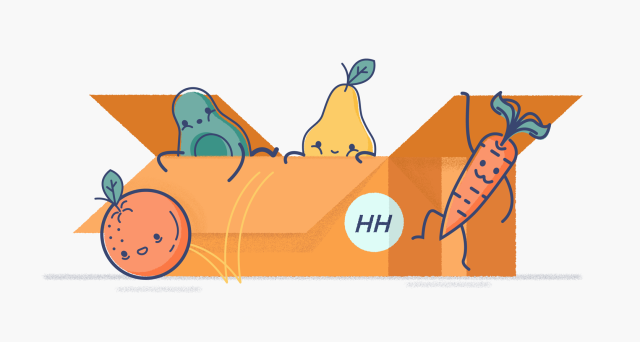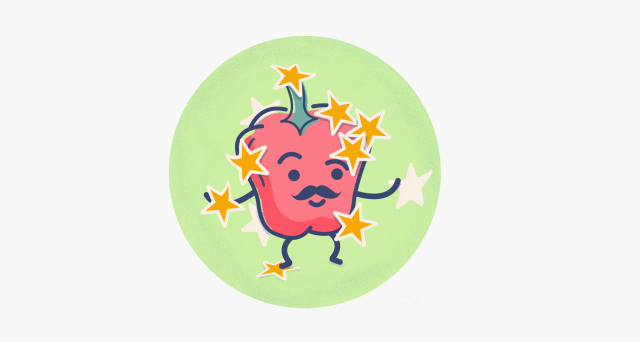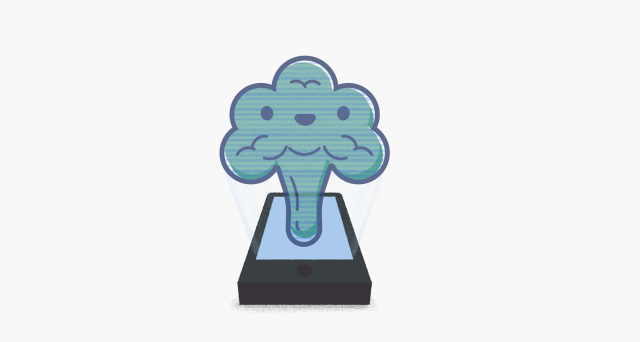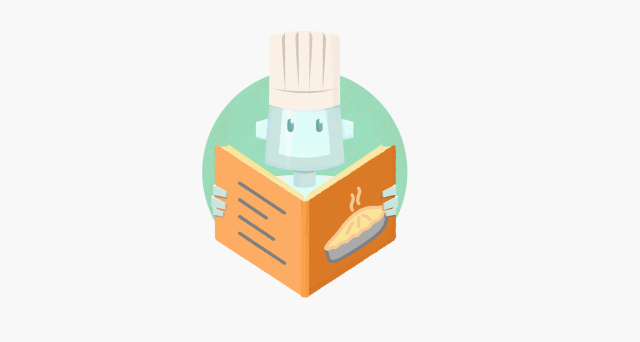Digital devices often come under fire for changing children’s behaviour for the worse. More time spent glued to a screen can equal less time outdoors, less time engaging in physical play and an inability to concentrate more generally.
As a digital agency designing products for children to use, we have a responsibility to understand how to make products that do not exacerbate problems. In particular, we've been thinking about how childhood obesity could be challenged – in the UK, nearly a third of children aged 2-15 are overweight or obese. We believe that by bringing children into the design process we can create digital experiences that give space for kids to learn, explore and grow. Designing the right kind of experiences, aimed at changing habits or creating new ones, can – we believe – have positive effects on children’s health.
In this experiment, we put our hypothesis to the test. We asked ourselves what a digital experience that encouraged young families to adopt positive, healthy habits might look like.
Childhood Obesity in the UK
Obesity is putting a huge strain on our health services – the NHS spent over £5 billion on overweight and obesity-related ill health between 2014-2015.
Culture, society, behaviour and biology are all factors in childhood obesity, and all inform an individual’s experience. In this complex context, there is no fix-all solution. What impact can one idea possibly have in this dense, high-stakes field? We decided to focus on one problem, talk to real people and design for them – rather than seeking a moonshot, 'this-is-it' approach.
There are numerous influences over a child's eating habits, but it’s thought that parents' influence is dominant in early childhood, when they act as the primary ‘providers, enforcers and role models'. The habits formed during infancy are proven to persist into later life, and those who are obese in childhood are more likely to be obese as an adult.
Recognition is growing for the value of digital tools in helping aid weight loss and behaviour change. This was recognised in a government report on childhood obesity, updated in January 2017, which said ‘we need to capitalise on the power of technology to support healthier choices’.
At ustwo we’re already starting to see the impact digital can have in the health space and the value collaborating with clinicians can have. For this project we reached out to the psychologists at Thriveport, our partners in developing Moodnotes: a CBT journaling app that prompts users to reconsider their emotional responses and identify thought traps to help improve their mental wellbeing. With this in mind, we sought their expertise about how similar practices could be applied to creating healthier eating habits.
Listening to Families
We ran a diary study with a few parents who had young kids to better understand the sorts of challenges they were facing. From this, we established interesting areas to tackle:
- Simplifying healthy eating for families
- Encourage kids to make healthy food choices
- Using gaming and activities to get families active and engaged
- Changing mindsets around what a treat is
- Helping people to understand how to budget for a healthier diet
- Providing ongoing support and advice to help people eat and live healthier
Each of these areas requires specific attention, so we dug into more detail:
How can we make healthy eating for families simple, quick and stress-free?
Time was one of the biggest factors for the families we spoke to when it came to making choices about what to eat. Lack of time often meant opting for a less healthy option, whether for the kids or themselves or not finding time to sit and eat together.
How can we encourage healthy food choices for kids?
We saw in our research that there was an incredible benefit for kids to connect with how food is grown, to be a part of that journey, and most importantly, to use positive reinforcement rather than negativity. This is something that has already been adopted in many schools with projects like Countryside Classroom.
How could we use gaming and activities to get families out and about?
We looked at Pokemon Go as a great example of encouraging people of all ages to unconsciously (or consciously) get out and about. Its release saw a flurry of reports focusing on the game's unexpected health benefits by galvanising young people to get out and about. And whilst the health benefits of the game have not yet been convincingly qualified, Dr. Thomas Baranowski, a professor of Social Psychology who specialises in obesity prevention and children's health behaviours, published a call for a rigorous study in the journal ‘Games for Health’ in August of last year.
For us this highlighted the potential of gamifying healthy behaviours – perhaps in a family context, bringing kids and parents into the experience together.
How can we help change mindsets about what makes a treat?
We also spoke to parents who said they use sweets and other foods as rewards, something that rings true with many of our own, grown-up, eating habits. Who hasn’t told themselves they deserve a treat or two after a particularly long or stressful day? Equally, the promise of sweets can be a godsend when it comes to persuading kids to do, or eat, something they don’t want to.
However, it’s been shown that this establishes unhealthy thinking patterns at a young age that can have long-term negative repercussions. If we didn’t use food as a reward, we would think about it in a very different way. Is there space to use non-food related rewards – stickers, trips out, reading time – to establish healthier attitudes towards food?
This was an especially interesting idea that also emerged in our earlier discussions with the psychologists at Thriveport. They were able to put this thinking about rewards in the context of wider maladaptive thinking patterns and highlight how a digital tool might be able to disrupt common thinking traps that plague our attempts to eat healthily:
Just as Moodnotes can prompt folks to consider healthier alternatives to their current thinking patterns, one might use an app to help identify the belief that "I should use food as a reward," and to prompt consideration of other ways to think about food – "Food is fuel" – and about rewards – "There are lots of ways I can reward myself and my children that don't rely on food." Basically, the app could be integrated as a way to identify, examine, and modify previously unexamined beliefs about both food and rewards.
How can we help people to understand how to budget for a healthier diet and understand the value of healthy food compared to unhealthy food?
For some people that we spoke to, budget restrictions were the biggest factor behind their food and shopping decisions. And again this is a much wider problem, with obesity linked to socio-economic status and cost cited consistently as a blocker for healthier eating.
How could be we make healthy eating options more affordable, or educate people on the already affordable options out there?
How can we provide ongoing support and advice to help people eat and live healthier?
Adapting individual habits temporarily is easy enough, but creating permanent behaviour change is much more difficult harder. This is a barrier that a lot of digital products and services are finding it hard to break through.
A good example of this is Fitbit. Initial research lauded wearable fitness trackers, like Fitbit, as an aid for weight loss. However more recently it has been revealed that they may not work for everyone. One study showed how in the longer term they were less successful than more conventional weight loss methods with people struggling to keep weight off.

Testing Ideas with Kids
Our next step was running a couple of really simple research experiments to test our theories on how children play and react to behaviour change techniques. First of all, we asked some parents to play a game with their kids that involved turning fruit and vegetables into characters using stickers. We asked them to tell us what game they would play with the characters they had invented…
The apple is eating all the town, and then I come along and have to eat the apple to save the day!
When we asked the parents for feedback on the activity, they loved it. One said their children 'really loved all the stickers, it’s definitely something we’d do together – it’s more fun and creative than watching TV.'
One thing we noticed was that the kids enjoyed naming all the fruit and veg that they played with, so the educational element was something they brought themselves, but found really interesting. It was great to hear children asking “Is it healthy for you mum?”
In the other experiment we ran, we asked families to set themselves an individual challenge for a week and track their progress on a chart using stickers. They also set themselves a non-food related reward if they achieved their goal.
Collecting and being rewarded with stickers did seem quite appealing to kids, especially if their parents were also being asked to participate in the challenge – they got to tell their parents off if they didn’t do what they’d promised! The sorts of rewards they set themselves were interesting too – opting to go to soft play, invite friends over or go to the cinema.
We spent some time trying to prototype a digital version of this idea, but quickly found it to be quite complex, and not something we were able to test in a quick, lightweight way.
All of this research made us believe that it would be an important component of our concept to have some offline experience, involved all the family, have the capacity for rewards and collecting as well as being playful and interactive. These elements became the foundations of our final concept service, so as it can most effectively meet the needs of really families and help create lasting healthy habits.
Delivering a Concept Service
Our concept service comprises of four main elements:
Making mealtimes easier, simpler and less stressful for families
The first component is a subscription box with kid-friendly recipes designed around seasonal vegetables. Cooking together means kids get to learn more about the food they're eating and feel more involved. What kid doesn't like joining the grown-ups? It's also been proven to encourage them to be more likely to try the food they cook. Each recipe is presented in a kid-friendly way – so older kids could read along and create culinary masterpieces. All the recipes would be available online too, so favourites could be saved for later use.

Collecting and playing When it comes to rewards for kids, we know from our research and experience that stickers and collecting things are strong motivators. Inside each box would be a card that relates to some of the veg. These could be collector's items, and as well as having a picture of the apple, cauliflower or kohlrabi… it would tell you some facts about it – Top Trumps-style.
Each card would have a little special something. Scan the card with your smartphone and the vegetable comes to life in AR, allowing kids to interact or play a game with them. These online characters could be saved (planted?) in a digital farm which the kids could explore, learning more about fruit and vegetables.

Incentivising and rewarding the whole family
Polishing off a fruit or vegetable from the box means points towards a reward – and, naturally, bonus points each time they try something new. These could either be individual rewards, like inviting friends round to play, or a group family reward such as a trip to the cinema.

Not just starting the habit, but sticking to it
To help families stick to their new healthier meals, the service needs to be convenient and easy to use, but there's a growing role for machine-learning technology to make sure experiences like this feel relevant and personal.
By using machine learning, we can tailor recipes each week to use familiar ingredients in different recipes, identify new things they can try as well as making sure firm favourites are still in the mix! Using the same technology, the digital component of the service can learn how the children's behaviour changes as they grow, making sure the experience grows with them, so they can still enjoy cooking and playing with their food whatever age they are.

Using Digital to Create Healthy Habits
After recent reports that MPs want supermarkets to stop discounting junk food in an important step to tackle childhood obesity, a service like this could be a way for food retailers to encourage healthy habits, and provide positive reinforcement for healthy behaviour.
This concept is just one way to look at things, and helped us to connect the dots presented in our research. It’s an attempt to make a positive contribution to solving an extremely complex problem. What we are suggesting is a relatively simple service that relieves the strain on families, makes eating healthier fun, educates kids as well as learns and grows the more the family uses it – hopefully creating more meaningful behaviour change.
Moreover, it’s a concept we came to through talking to real families – our target users. Testing is essential to creating a product that kids want to use and doesn’t undermine parents as they attempt to teach their kids to balanced digital habits.
We are eager to keep exploring the ways that digital design can help tackle health issues. If that sounds like you too, get in touch and find out what we could create together – health@ustwo.com